Tesla's next-generation vehicle platform, succeeding previous mainstream platforms, aims to produce more affordable electric vehicles. While the standard vehicle lacks an official name (often referred to as Model 2 or Model Q), a driverless iteration, the Cybercab, was unveiled in October 2024. This platform is designed to facilitate autonomous driving capabilities, likely utilizing advanced AI and sensor technologies to navigate environments without human intervention. The ultimate goal is a cost-effective electric mobility solution, potentially expanding access to Tesla's technology for a broader consumer base.
2006: First Master Plan
In 2006, Elon Musk posted Tesla's first "Master Plan", which outlined four tasks for the company.
2016: Second Master Plan
In 2016, Tesla stated in its second "Master Plan" that it would "expand the electric vehicle product line to address all major segments".
2017: Initial Model 3 Pricing
In 2017, the initial models of the Tesla Model 3 were priced at $52,000-plus, despite promises of cheaper models to follow.
2018: Continued High Pricing of Model 3
In 2018, the initial models of the Tesla Model 3 continued to be priced at $52,000-plus, even with promises of cheaper models.
2019: Company Predictions
Based in part on the company predictions made in 2019 regarding robotaxi deployment, as well as the historical delays between prototype and production Tesla vehicles, CleanTechnica had warned that even with the unveiling, the Tesla robotaxi may not be available commercially until 2025 or later.
September 2022: Next-Generation Vehicle Platform Decision
By September 2022, Elon Musk accepted the recommendation that the next-generation vehicle platform could support both a small, mass-market car and a self-driving "Robotaxi" that would be built without a steering wheel.
October 2022: Focus on Next-Generation Vehicle
In October 2022, Tesla stated that its engineering team had turned its focus to the next-generation vehicle, which would be half the price of the Model 3/Y platform.
2022: Next-Generation Vehicle Platform Development
After 2022, Tesla began developing its next-generation vehicle platform, marking the company's third mainstream platform, with the media using the names Model 2 and Model Q to refer to the vehicle.
2022: Next-Generation Platform Under Development
The next-generation platform was mentioned in Tesla's 2022 financial report as under development, but the report provided no information about specific cars that might be built on the platform.
March 2023: Third Master Plan and Compact Vehicle Details
During its March 2023 Investor Day event, Tesla revealed its third "Master Plan", which included more details on forthcoming models, including a compact vehicle with LiFePO4 battery chemistry.
March 2023: Gigafactory Mexico Plan
In March 2023, Tesla announced that the Gigafactory Mexico facility would be used to build Tesla's next-generation vehicle.
May 2023: New Product Design and Silhouette Reveal
At the annual "Cyber Roundup" shareholders' meeting in May 2023, Musk said that Tesla was "actually building a new product", showing off a rendered silhouette.
May 2023: Change of Initial Build Location
In May 2023, Musk decided to change the initial build location for the next-generation cars and Robotaxis to Austin, Texas.
September 2023: Location Decision Made Public
In September 2023, the information about Musk's May 2023 decision to change the initial build location for the next-generation cars and Robotaxis to Austin became public.
November 2023: Plans to Produce in Gigafactory Berlin-Brandenburg
In November 2023, Reuters reported that Tesla planned to also produce the new vehicle at Gigafactory Berlin-Brandenburg.
2023: Preliminary Schedule for New Vehicle Production
After the fourth quarter 2023 earnings call, Tesla provided a preliminary schedule to its suppliers, planning to begin production of a new vehicle at Gigafactory Texas in mid-2025, with a production forecast of 10,000 vehicles per week.
2023: Unmaterialized Vehicles
By early 2023, vehicles promised in 2016, including a bus, second-generation Roadster, and lower-cost Tesla, were yet to materialize.
January 2024: Next-Gen Platform Architecture Announcement
In January 2024, Tesla announced that the first car utilizing significant parts of the next-gen platform architecture and production process could see US deliveries targeting the second half of 2025, initially built on the legacy Model 3/Y platform.
April 5, 2024: Report of Low-Cost Car Cancellation
On April 5, 2024, Reuters reported that Tesla has canceled plans to market a low-cost car to consumers and instead intends to use the chassis as the basis for a robotaxi.
April 6, 2024: Robotaxi Unveiling Announcement
On April 6, 2024, Elon Musk posted to social media, stating that a robotaxi would be unveiled on August 8 of that year.
October 10, 2024: Tesla "We, Robot" Unveiling Event
On October 10, 2024, at the Tesla "We, Robot" unveiling event in California, Tesla referred to the new autonomous passenger car as both the Robotaxi and as the Cybercab, demonstrating 20 concept vehicles. A concept of a Tesla Robovan was also shown, that will be able to carry up to 20 passengers.
October 2024: Tesla Cybercab Unveiling and Production Target
In October 2024, Tesla CEO Elon Musk unveiled the Tesla Cybercab, targeting production for 2026.
October 2024: Cybercab Unveiling
In October 2024, Tesla unveiled a driverless version of its next-generation vehicle platform, named the Cybercab.
2024: Product Line Expansion Status
By 2024, Tesla released products included in the second "Master Plan" (2016), such as sport-utility vehicles (Models X and Y), pickup trucks (Cybertruck), and commercial trucks (Semi).
2024: Potential Early Production Start
During a quarterly earnings call in 2023, Tesla announced that production of a new vehicle could begin as soon as late 2024, using processes developed for NV9X, on a platform derived from existing vehicles.
2024: Platform Codenamed "Redwood"
In early 2024, Reuters reported that Tesla's next-generation vehicle platform was codenamed "Redwood", using an architecture internally referred to as "NV9X".
June 2025: Tesla Robotaxi Commercial Launch
On 22 June 2025 Tesla launched their commercial taxi service Tesla Robotaxi to a small group of invited users in Austin, Texas using Model Y vehicles.
2025: Potential Robotaxi Availability
Based in part on the company predictions made in 2019 regarding robotaxi deployment, CleanTechnica had warned that even with the unveiling, the Tesla robotaxi may not be available commercially until 2025 or later, which was subsequently confirmed by the company.
2025: Targeted US Deliveries
Tesla announced in January 2024 that the first car utilizing parts of the next-gen platform architecture could see US deliveries targeting the second half of 2025, built on the Model 3/Y platform.
2025: Original Production Target for New Vehicle
Tesla's preliminary schedule in late 2023 planned to begin production of a new vehicle at Gigafactory Texas in mid-2025, with a production forecast of 10,000 vehicles per week.
2026: Cybercab Production Target
Tesla CEO Elon Musk unveiled the Tesla Cybercab in October 2024, with production targeted for 2026.
Mentioned in this timeline
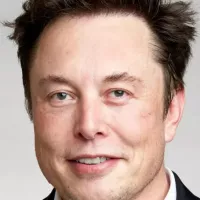
Elon Musk is a prominent businessman and entrepreneur recognized globally...
California is a U S state on the Pacific Coast...

The Tesla Model Y is an all-electric compact crossover SUV...
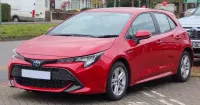
A car also known as an automobile is a wheeled...
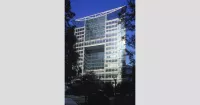
Reuters is a major international news agency owned by Thomson...
Mexico officially the United Mexican States is a North American...
Trending

3 months ago Sofia Kenin Advances to Second Round at Washington Open, Defeating Hailey Baptiste.
11 days ago Sacramento Valley Forecast: Chance of Rain and Fall Weather Expected This Week

5 months ago Tyler Perry's ‘She the People’ on Netflix: Reasons to watch and cast relationships.
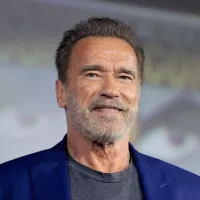
4 months ago Arnold Schwarzenegger juggles animal care, defends son Patrick, and ignores Andrew Tate.

2 months ago Naomi Osaka advances in Montreal as Pegula is upset by Sevastova.

2 months ago Ronda Rousey, 38, stuns in Wonder Woman bikini after physique transformation post birth.
Popular

Candace Owens is an American political commentator and author known...

Charlie Kirk is an American right-wing political activist entrepreneur and...

Greta Thunberg is a Swedish climate activist who gained international...
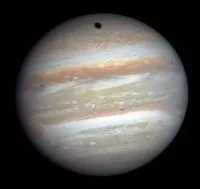
Jupiter is the fifth and largest planet from the Sun...

Kashyap Pramod Patel is an American lawyer and former federal...

Chuck Schumer is the senior United States Senator from New...